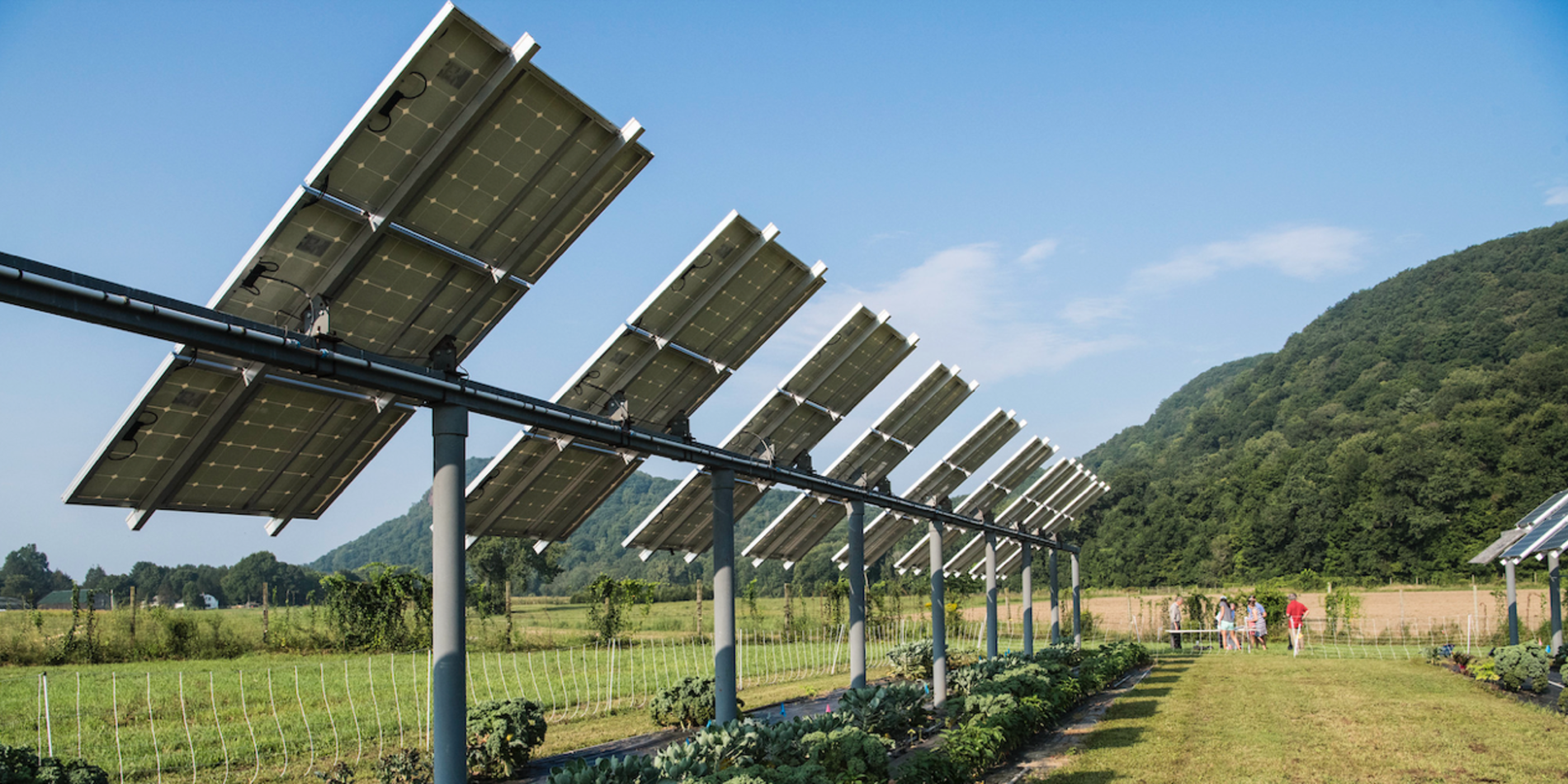Shifting Winds
Wind turbines can turn on a horizontal axis, like an airplane propeller, or on a vertical axis, like an eggbeater. Forty years ago, the vertical style fell out of favor, but a venture with links to Stanford believes the technology is worth a second look.
“We want our turbines to provide the lowest cost electricity for our customers, so it gets chosen, period,” says Ben Strom, who together with Ian Brownstein, PhD ’18, co-founded XFlow Energy in 2017. “Our north star is always the cost of the turbine over its lifetime, divided by the amount of power it outputs.”.
So far, they indicate their prototypes are as efficient as utility-scale turbines and on par with the cost of rooftop solar, bringing the technology within reach for communities and businesses. In addition, they see other benefits compared to horizontal-axis turbines. Manufacturing the vertical-axis blades is simpler, and transporting, installing, and decommissioning them is easier. The technology could even go out to sea; XFlow Energy is participating in a multi-year study with ARPA-E to examine the feasibility of ocean wind farms.
So, given these advantages, why are vertical-axis turbines relatively rare?
“Everyone asks us that,” says Strom, rubbing a hand across his forehead. “It’s quite a matter of opinion, but I’m happy to give you mine,” he says, and then he dives into the history of wind turbines.
Two roads diverged

In a way, it came down to physics. In the 1970s, energy scientists viewed both styles of wind turbines favorably. Yet before the advent of powerful, inexpensive computing, the wind flows and loads for horizontal turbines were far easier to model—you could calculate them on a chalkboard—and that approach quickly gained in popularity. No such simple models existed for cross-flow and vertical-axis wind turbines, because the flow conditions vary within every revolution of the blades.
By the 1990s, vertical-axis technology had fallen behind. Today, the funding gap between vertical and horizontal turbines is measured in the billions.
Worse, vertical-axis wind turbines, or VAWTs, soon gained a reputation in the renewable energy industry for “greenwashing”—for giving a building (and its occupants) the appearance of being sustainably minded, but without actually producing much electricity. More like a shiny sculpture or glorified wind sock.
Brownstein says, for many VAWTs on the market, the greenwashing perception is justified. During his doctoral studies at Stanford, he and his advisor Professor John Dabiri tested more than 50 VAWT models for sale. Not one of them had an aerodynamic efficiency over 18 percent, meaning the ratio of the energy captured as compared to what is available from the wind. The newest commercially operated horizontal turbines can reach efficiencies of over 50 percent.
Still, the professor and doctoral student saw promise in the upright designs. Examining how VAWTs were failing gave them ideas for improving the rotor design, and with an important advance, they filed a patent through the Stanford Office of Technology Licensing.
Discussing how to advance the wind technology further, Dabiri asked Brownstein if he would consider creating a startup. Brownstein said he wouldn’t do it alone, but perhaps with a business partner—a friend he had in mind from his undergrad days at Brown University. To his surprise, Strom, the very friend he had in mind, called him first wanting to collaborate. Synchronicity told them they were headed in the right direction.
Academia to enterprise
XFlow Energy is not the first startup to try and turn wind energy on its side. Windspire Energy, Helix Wind, and others selling new VAWT designs have launched in recent years to fanfare—and then collapsed, either literally, from structural weaknesses in the turbine design, or financially, from unsustainable pricing models.
Undeterred, Brownstein and Strom are meticulously proving out their technology one prototype at a time.
This February, they drove their latest 16-foot turbine—half the size of the first model they hope to sell—from Seattle to a testing site in Lancaster, Calif., for a month of monitoring and fine-tuning.
The road trip itself demonstrates another feature of the XFlow Energy turbine: portability. Their models will be designed to transport in pieces that fit into either a 20-foot or 40-foot shipping container, ready for highway or ocean freight.
Currently, the venture is looking to repower users dependent on diesel generators, such as remote rural communities in Alaska, Canada, and on islands. In fact, a fishing company headquartered in the same Seattle warehouse as XFlow is considering their turbine for its Alaskan fishery.
Diesel power not only pollutes; it is expensive. For a site averaging 13 miles per hour of wind, the cofounders estimate that one 20-kilowatt turbine from XFlow Energy could save an Alaskan community more than $26,000 a year, displacing over 6,000 gallons of diesel fuel and eliminating 51 tons of carbon dioxide emissions per year—equivalent to driving a car nearly 115,000 miles.
After demonstrating the durability of their turbines in smaller communities over the next five years, they then hope to approach energy utilities, believing VAWTs can transform wind energy on a larger scale.
Flexible funding
In these lean early years, the cofounders say support from the TomKat Center for Sustainable Energy has been important. An Innovation Transfer grant allowed them to iterate and refine their prototypes, giving them access to essential tools such as a computer numerical control (CNC) router for shaping their turbines.
“This machine shop is here because of the TomKat Center,” says Brownstein. “It’s really hard to get grant funding for physical things—facilities, infrastructure, equipment.”
Adds Strom: “With some questions back and forth, we were able to say ‘Hey, this is what we need at this moment.’”
For example, midway into building a quarter-size prototype, the cofounders realized how useful it would be to have wind power onsite to debug their turbines. Although there is a subsonic wind tunnel at nearby University of Washington, where Strom completed his PhD, the fee for daily use is nearly $6,000.
With approval from the center, they were able to use their grant to build a collapsible wind tunnel right in their machining shop. “We can test for weeks now for less than the cost of a day testing at the university,” says Brownstein. “That would not have been possible without the TomKat Center.”
XFlow Energy has received funding from the TomKat Center for Sustainable Energy, the National Science Foundation’s Small Business Innovation Research Program, the National Renewable Energy Laboratory, and the U.S. Department of Energy.




